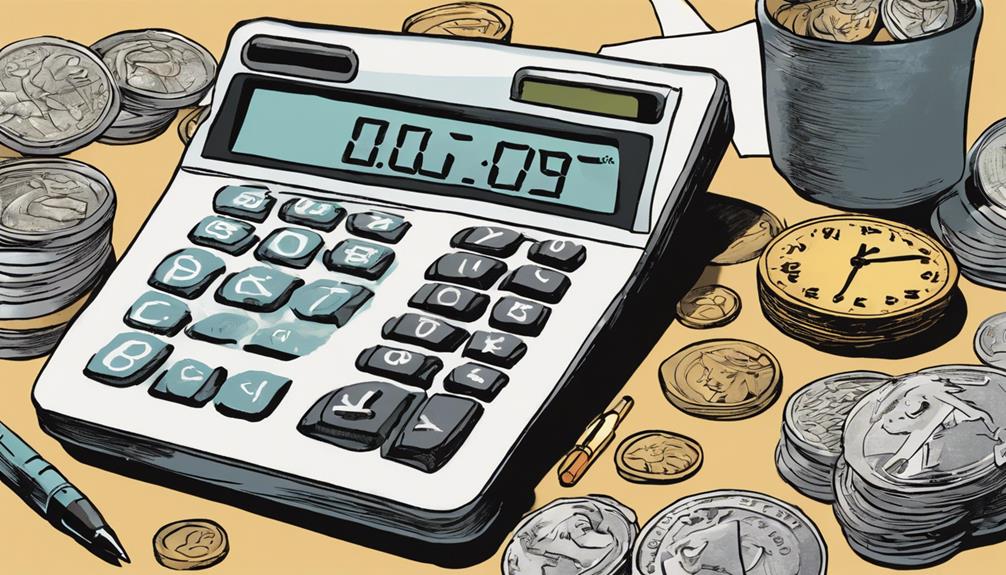Choosing between term debt and revolving debt is crucial for the financial well-being of your business. Term debt provides fixed payments and predictable interest rates, which are beneficial for long-term financial planning for significant investments. Conversely, revolving debt offers immediate access to funds, making it ideal for handling unforeseen expenses such as payroll or inventory. Evaluating your business’s cash flow and future requirements will enable you to select the most suitable option for your circumstances. If you are interested in examining how each option can influence your business strategy, there is much more to consider.
Key Takeaways
- Term debt is ideal for long-term investments, providing fixed payments that facilitate budgeting and cash flow management.
- Revolving debt offers flexibility for immediate cash flow needs, allowing quick access to funds for unpredictable expenses.
- Consider the purpose of borrowing; use term debt for significant, one-time costs and revolving debt for ongoing operational expenses.
- Assess your cash flow and future needs to determine the most suitable type of debt for your business situation.
Understanding Term Debt

When you take on term debt, you commit to a fixed payment schedule that spans months or years, making it easier to plan your finances. This type of debt typically offers a fixed interest rate, resulting in predictable monthly payments.
For instance, if you borrow $50,000 to pay back over five years, you know exactly how much to budget each month. Term debt generally allows for larger borrowing amounts compared to revolving debt, which is essential for significant investments.
However, the qualification process can be lengthier, requiring a new application for each loan. Understanding these aspects helps you make informed decisions about financing your business needs effectively and strategically.
Exploring Revolving Debt

Revolving debt offers flexibility by allowing you to borrow as needed, making it ideal for managing everyday business expenses.
You can tap into this type of credit for unpredictable costs like inventory purchases or payroll, ensuring you have the funds when you need them.
The quick borrowing capability lets you address immediate financial needs without lengthy approval processes.
Plus, since you only pay interest on the amount you use, it can be more cost-effective for smaller, frequent expenses.
This adaptability helps you avoid the burden of inappropriate financing types, allowing your business to stay nimble and responsive.
Ultimately, understanding how revolving debt fits your financial strategy is key to leveraging its benefits effectively.
Strategic Uses for Term Debt

Term debt is a powerful tool for financing long-term investments, allowing you to manage significant purchases like renovations or machinery with predictable monthly payments.
When you're planning a large project, using term debt can help you spread costs over several years, making it easier to budget. This fixed repayment schedule guarantees you know exactly what to expect each month, aiding your cash flow management.
Additionally, securing a term loan can provide the capital needed for growth without straining your resources. It's particularly useful for one-time expenses, enabling you to invest in your business confidently.
Strategic Uses for Revolving Debt

Utilizing revolving debt is essential for managing immediate cash flow needs, especially for expenses like inventory purchases and payroll. This type of debt gives you quick access to funds, allowing you to address unpredictable costs without delay.
You can tap into your credit line as needed and only pay interest on the amount used, which helps keep expenses manageable. This flexibility is perfect for businesses facing seasonal fluctuations or unexpected expenses.
Additionally, revolving debt can help you maintain a healthy cash reserve for emergencies, ensuring your business stays agile. By using revolving debt wisely, you can balance growth opportunities while managing operational costs effectively.
Just remember to monitor your borrowing closely to avoid potential pitfalls.
Expert Insights on Debt Choices

Making informed debt choices is essential for your business's financial health and long-term success.
Experts like Ami Kassar emphasize the necessity of understanding the differences between term and revolving debt. You should consider your financial needs carefully; term debt works well for significant investments, while revolving debt is perfect for day-to-day operational expenses.
Kassar advises that you assess your company's cash flow and project future needs before deciding. He also highlights the importance of having a clear repayment strategy to avoid unnecessary debt burdens.
Engage with financial advisors who can provide tailored insights based on your unique situation. Ultimately, the right debt choice can empower your business to thrive in a competitive landscape.
Frequently Asked Questions
How Does Interest Rate Volatility Affect My Debt Choice?
Interest rate volatility can greatly impact your debt choice. If rates rise, fixed-rate term debt may become more appealing, offering stability. Conversely, if rates fall, revolving debt could be cheaper, allowing for flexible payments.
Can I Switch Between Term and Revolving Debt Types?
Can you really switch between debt types? Absolutely! You can adapt your financing to fit changing needs, but keep in mind that each type has its own terms and conditions to take into account before making a move.
What Are the Tax Implications of Each Debt Type?
When considering tax implications, you'll find that interest on both term and revolving debt is typically tax-deductible. However, make certain you consult a tax professional to understand specific regulations that may apply to your situation.
How Do Credit Scores Influence Debt Approval Processes?
You're probably surprised how much your credit score impacts debt approval. Lenders assess your score to gauge risk; a higher score boosts your chances of getting favorable terms, while a lower score limits your options considerably.
What Hidden Fees Should I Watch Out for With These Debts?
When considering debt, watch out for hidden fees like origination fees, late payment penalties, and prepayment penalties. These can greatly increase your overall cost, so read the fine print before committing to any agreement.
Is It Better to Use Term Debt or Revolving Debt for my Home Business?
When considering financing options for your home business, it’s important to weigh the advantages of term debt and revolving debt. Term debt may be ideal for long-term investments, while revolving debt offers flexibility for short-term needs. Understanding the implications of each can help unlock your business potential.
Conclusion
In the grand tapestry of financing, knowing when to embrace term debt or dance with revolving debt can truly elevate your business.
By thoughtfully evaluating your needs and the unique characteristics of each option, you can craft a financial strategy that sings in harmony with your goals.
Remember, it's not just about borrowing; it's about making choices that support your journey.
So, take a moment, weigh your options, and let your financial decisions pave the way to success.









